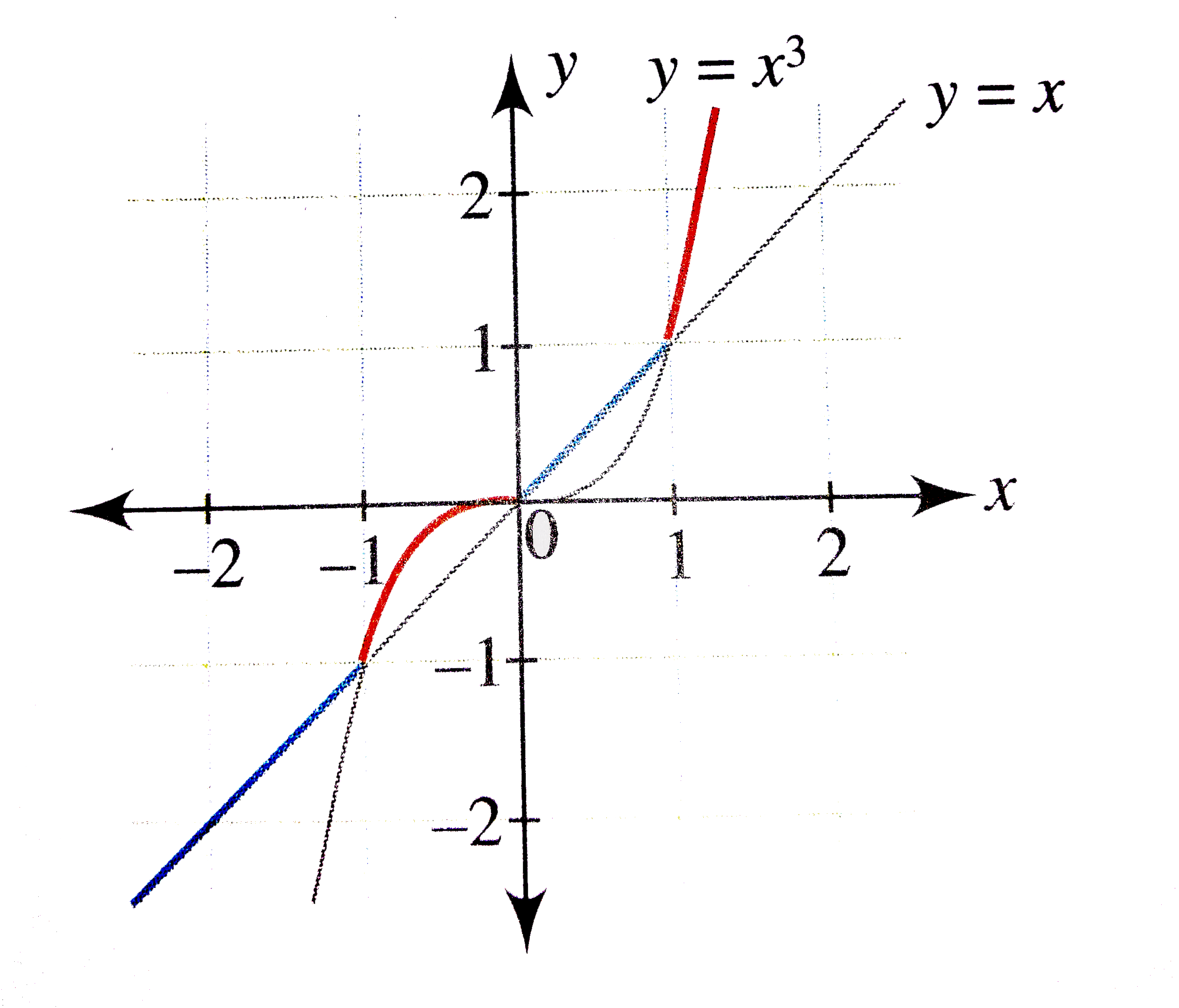Let f:R→R be a function defined by f(x)=max.{x,x3}. The set of all points where f(x) is NOT differenctiable is
(a) {−1,1}
(b) {−1,0}
(c ) {0,1}
(d) {−1,0,1}
We have f(x)=max.{x,x3}
Draw the graphs of y=xandy=x3

Graph of y=f(x) is combination of the combination of the blue and red-lined graphs.
From the graph, y=f(x) is non-differentiable at x=−1,x=0andx=1.
Topper's Solved these Questions
- BOOK - CENGAGE ENGLISHCHAPTER - GRAPHS OF ELEMENTARY FUNCTIONS EXERCISE - EXERCISES34videos
GRAPHS OF ELEMENTARY FUNCTIONS
- BOOK - CENGAGE ENGLISHCHAPTER - GRAPHS OF POLYNOMIAL AND RATIONAL FUNCTIONSEXERCISE - Exercises17videos
GRAPHS OF POLYNOMIAL AND RATIONAL FUNCTIONS
- BOOK - CENGAGE ENGLISHCHAPTER - GRAPHS OF TRIGONOMETRIC FUNCTIONSEXERCISE - Exercises22videos
GRAPHS OF TRIGONOMETRIC FUNCTIONS
Similar Questions
Let f:R→R be a function defined byf(x)=min{x+1,|x|+1}. Then, which of the following is true?
View SolutionLet f : R → R be a function defined by f ( x ) = 2 x − 5 ∀ x ∈ R . Then Write f−1.
View SolutionLet f:R→R be the function defined by f(x)=4x−3 for all x∈R. Then write f−1.
View SolutionLet f:R→R be the function defined by f(x)=4x−3 for all x∈R . Then write f−1 .
View SolutionLet f:[−1,1]→Rf be a function defined by f(x)=xx+2. Show that f is invertible.
View SolutionLet f:R→R be a function defined by f(x)=∣x] for all x∈R and let A=[0,1), then f−1(A) equals
View SolutionLet a function f:R→R be defined as f(x)=x+sinx. The value of ∫2π0f−1(x)dx will be:
View SolutionLet a function f:(0,∞)→[0,∞) be defined by f(x)=∣∣∣1−1x∣∣∣. Then f is
View SolutionLet f:R→R+ be defined by f(x)=ax, a>0 and a≠1 . Write f−1(x) .
View SolutionLet f:R→R be a function such that f(0)=1 and for any x,y∈R,f(xy+1)=f(x)f(y)−f(y)−x+2. Then f is
View Solution

